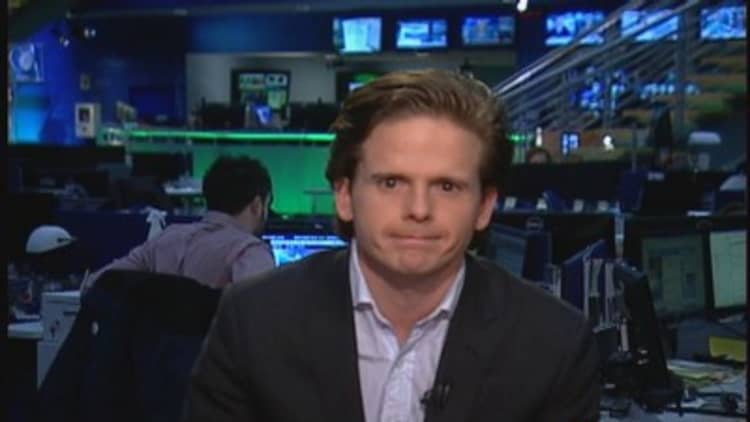
Boring can be beautiful—at least that was true Friday morning when Procter & Gamble managed to buck a broad selloff. The question is how long the healthy glow will last.
Shares of the consumer-products giant rose more than 2½ percent Friday after the company reported earnings that were in line with estimates and stuck to its full-year guidance. While P&G's target of 5 to 7 percent earnings growth in the June fiscal year isn't spectacular, it's more than enough to comfort investors who have been clobbered by disappointments in the consumer and retail sector in recent weeks.
It all feels like a flashback to early 2013, when P&G and other consumer-staples stocks became the darlings of yield-hungry investors seeking large companies with steady cash flows and achievable growth targets. P&G once again fits that profile, with its 3 percent dividend yield, modest growth target and whopping $220 billion market capitalization.
While P&G looked great Friday and should outperform if the sell-off continues, it's less clear how it will fare if markets stabilize. After all, the stock trades at 18.9 times consensus earnings for the year through June, compared with an average of around 15 times during 2011 and 2012.

Fortunately, there are a few levers P&G can pull. Chief Executive A.G. Lafley, who returned to the post last May out of retirement after three-and-a-half years, has long wanted to improve P&G's profitability metrics. P&G has an operating margin below 20%, compared with about 24% at arch rival Colgate-Palmolive.
One way to narrow that gap is to operate more efficiently overseas. J.P. Morgan's John Faucher estimates that P&G's operating margins in international markets outside of China and Russia are in the high single digits. If the company shifts production to local facilities and broadens its product portfolio, there's a big opportunity to bring those markets up to snuff.
P&G has a decent shot a catching up with Colgate over time, given Lafley is steering a much larger company that was late to begin productivity improvements after the crisis.
Of course, change tends to be slow-going at corporate behemoths like P&G, even with a veteran like Lafley in charge. And Colgate's focus on high-margin products like oral care give it an inherent advantage, so P&G is unlikely to share its 21-times price/earnings multiple. But for investors seeking insulation from wild market swings, P&G should get the job done.

